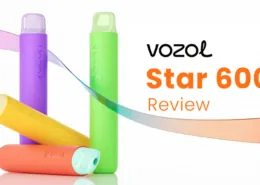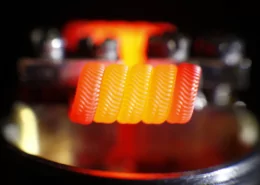How to Fix Disposable Vape Problems: Regulation Changes for Waste Reduction and Youth Access
With the upcoming reading of Dr. Caroline Johnson’s bill regarding disposable vapes due on March 24th, it is important that we look at both the benefits of disposable vapes and how we can effectively tackle the rising problems without restricting access to the single most effective quitting aid available to adult smokers.
The Issues with Disposable Vapes
Disposable vapes have gained significant popularity in recent years, offering a convenient and accessible alternative to traditional cigarettes. However, there are two major issues that need to be addressed in order to ensure the responsible use and disposal of these products.
Issue 1: Youth vaping.
The rise in youth vaping is a concerning trend that requires immediate attention. According to the July 2022 report by ASH titled ‘Use of E-Cigarettes (Vapes) Among Young People In Great Britain,’ the proportion of 11-17-year-olds regularly vaping has increased from 3.3% in 2021 to 7% in 2022. Although the report also highlights that the use among 11-17-year-olds who had never smoked remains low and largely experimental, this upward trend is alarming and necessitates effective measures to address it.
Issue 2: A lot of waste.
While disposable vapes offer convenience and simplicity, their single-use nature contributes to environmental waste. These devices typically contain a small lithium-ion battery and a significant amount of plastic. Improper disposal of disposable vapes can lead to fires at landfill sites and recycling centers, and they are also being littered in a similar manner to cigarette butts. It is crucial to find a solution to minimize the environmental impact associated with these products.
The Benefits of Disposable Vapes
Before delving into the issues, it is important to acknowledge the benefits that disposable vapes provide to adult smokers who are looking to quit traditional tobacco products.
Benefit 1: They helped hundreds of thousands of adult smokers quit.
According to the ASH data from August 2022, approximately 15.2% of current vapers reported using disposable vaping products. With a total of 4.3 million adult vapers at that time, this translates to around 653,600 individuals relying on disposable vapes as a quitting aid. Considering the passage of time, it is likely that this number has grown substantially. Disposable vapes have played a vital role in helping adult smokers transition away from traditional cigarettes and improve their overall health.
Benefit 2: They are an easy introduction to vaping.
For many smokers, the process of switching to e-cigarettes can be intimidating and confusing. A study published in 2017 found that one of the barriers preventing smokers from switching to e-cigarettes was the perceived complexity of the products, such as coil changing and selecting the right e-liquid. Disposable vapes address this issue by eliminating the learning curve associated with more advanced vaping devices. Smokers can focus on their journey to quit smoking without being hindered by technical complexities.
Benefit 3: They are a very low-cost introduction to vaping.
Affordability is a crucial factor in encouraging smokers to try vaping as an alternative. The recent Khan Review titled ‘Making Smoking Obsolete’ highlights the disproportionate prevalence of smoking in economically disadvantaged regions of the UK. Disposable vapes offer a cost-effective entry point for smokers who want to take their first steps toward a less harmful alternative. Compared to refillable vape kits that can cost £25 or more, disposable vapes are available for £5 or less, making them an accessible choice for smokers on a limited budget.
Benefit 4: They are perfect for smokers who have dexterity problems.
It is essential to consider the needs of smokers with physical ailments such as arthritis, ataxia, tremors, or Parkinson’s disease. For individuals who may struggle with tasks like refilling e-liquid, changing coils, or swapping pods, disposable vapes provide a convenient solution. These devices eliminate the challenges associated with manual dexterity, ensuring that smokers with physical limitations can still access harm reduction options.
Tackling Youth Vaping and Waste with Regulation Changes
To effectively address the issues surrounding disposable vapes, it is necessary to propose simple regulation changes that can make a meaningful impact on both youth vaping and waste reduction.
Waste Reduction
The single-use nature of disposable vapes contributes to significant environmental waste. However, a seemingly counterintuitive solution can help mitigate this problem. By increasing the eliquid capacity of disposable vapes from the current 2ml limit to 10ml, we can introduce a charging port to the devices. This change allows for the reuse of the same battery 5-6 times before the eliquid runs out, reducing battery waste by 80% (as one battery can power one device instead of five). Furthermore, constructing one larger device requires fewer materials compared to multiple smaller devices, leading to a notable reduction in associated waste, such as plastic and aluminum.
While this regulation change is implemented, both the vape industry and the waste and recycling industry can focus on developing innovative methods to improve the recycling of disposable vape products. Simplifying the disassembly process and exploring alternative battery technologies that do not rely on lithium are promising avenues that require time to develop fully.
Additional Proposals for Regulation Change
In addition to the increase in eliquid capacity, it is important to establish additional measures to ensure responsible use and disposal of disposable vapes.
- Internal battery capacity must not exceed 500mAh, and the device must have a charging port to prevent manufacturers from simply increasing the battery size without considering other factors.
- Introduce a minimum eliquid capacity requirement within the range of 8-10ml. This provision would gradually phase out 2ml products from the market, effectively outpricing them for underage individuals and significantly reducing waste.
- Emphasize the importance of easily removable batteries for recycling purposes and implement measures to ensure safe handling during the recycling process, such as detaching any wires connected to the battery.
Addressing Youth Access
Reducing youth access to disposable vapes is a critical aspect of ensuring responsible use and protecting underage individuals. While increasing the eliquid capacity alone will not solve this issue comprehensively, it represents a significant step in the right direction.
Currently, disposable vapes are priced between £4-6, making them financially attainable for individuals under 18 years old. However, by increasing the eliquid capacity to 10ml, the cost of these products will rise significantly, bringing them into parity with the price of a pack of 20 cigarettes, which typically ranges from £12-15. This price adjustment will act as a deterrent, making disposable vapes less affordable and less appealing to underage individuals.
While increasing the eliquid capacity serves as a positive measure, it is crucial to implement a comprehensive approach to tackle youth access. Urgent implementation of a compulsory national test purchasing scheme, stringent enforcement against rogue traders selling to children, and imposing heavy fines as a real deterrent are vital steps to prevent underage sales.
Avoiding a Thriving Black Market
Prohibition often leads to unintended consequences, such as the rise of a thriving black market. The current landscape in the UK already showcases a significant black market for illegal vape products. These unregulated products lack safety testing, and their availability poses a significant risk to consumers. It is imperative to consider the implications of further restrictions on disposable vapes.
Pushing more business into the hands of organized crime will not solve the problem; it will exacerbate it. Illegal products can be found readily available on high streets across the nation, with no regard for safety or age restrictions. In order to combat this issue effectively, greater enforcement of current regulations is necessary. By legitimizing larger capacity devices through proper regulation and safety standards, we can curb the demand for illegal products and ensure the safety of consumers. It is crucial to acknowledge that adult smokers in the UK who want to switch to vaping prefer larger devices. If these devices meet the necessary regulatory standards, there is no reason to prohibit their use. This approach benefits the environment, consumers’ wallets, and most importantly, it aligns with the goal of achieving a Smokefree 2030.
Safety Considerations
A valid concern regarding the proposed increase in eliquid capacity is the potential impact on safety. However, it is important to note that a higher eliquid capacity does not inherently constitute a safety concern. Recent incidents of non-compliant products containing 3.2ml of e-liquid instead of the UK limit of 2ml highlight regulatory issues rather than safety hazards. The MHRA has clarified that these non-compliant products do not pose any danger to users. Therefore, as long as disposable vapes go through the proper regulatory process and are notified with the MHRA, consumers can have confidence in their safety.
Closing the Legal Loophole and Protecting Underage Individuals
The current regulatory framework in the UK contains a significant loophole when it comes to the age restrictions for vaping products. The Nicotine Inhaling Products (Age of Sale and Proxy Purchasing) Regulations of 2015 only cover products that contain nicotine or are capable of containing nicotine. As non-nicotine-containing disposables are closed units and cannot be refilled, there is currently no age restriction for 0mg/ml disposable products. This regulatory gap is unacceptable and must be promptly addressed.
To ensure the responsible sale and use of all vape products, irrespective of nicotine content, the law needs to be amended. A consistent over-18 policy should be enforced for all vape products, closing the loophole and preventing underage individuals from accessing these products legally.
Conclusion
To address the problems associated with disposable vapes effectively, a balanced approach is required. By implementing regulation changes that address waste reduction and youth access while preserving the benefits for adult smokers, we can achieve a responsible and sustainable vaping landscape. Increasing the eliquid capacity of disposable vapes, alongside comprehensive measures to tackle youth access and enforce existing regulations, will promote responsible use and protect underage individuals. It is crucial to prioritize safety considerations and address regulatory gaps to ensure the effective regulation of all vape products.
- Foger Bit 35K Disposable Vape Review – Crypto Style Vaping - August 16, 2025
- Cambodia: Phnom Penh Bans Smoking & Vaping on “Walk Street” - August 16, 2025
- Mexico City Congress Approves Ban on Vapes & E-Cigs - August 16, 2025








